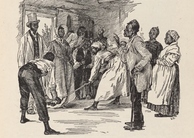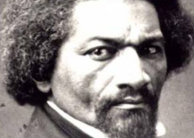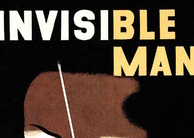John Temple Graves and the 'Lost Tribe:' An Analysis of "The Big World At Last Reaches Gee's Bend"
By
2012, Vol. 4 No. 08 | pg. 1/2 | »
KEYWORDS:
An exhibition entitled “The Quilts of Gee’s Bend” opened at the Whitney Museum of American Art in New York in November, 2002 (McGee), bringing worldwide attention to a secluded hamlet in a curve of the Alabama River. Unbeknownst to many of the admirers of these brightly patterned blankets was that the national spotlight had once before been shone on the town. That time was sixty five years previous, in a feature article in The New York Times by prominent journalist John Temple Graves II. The contextual complexities of the article, “The Big World At Last Reaches Gee’s Bend,” however, set it apart from the array of 1930s media that advertised the redeeming qualities of the Roosevelt administration’s New Deal projects. In the hands of a Southern Democratic writer, it was an endorsement for federal “color-blind” (Wise 2010) and ‘separate but equal’ policy across the board. As a result of honing in on the success of an isolated community in which Jim Crow race relations and tensions of the urban New South literally ‘took a back seat’ to a black community’s more pressing Depression Era economic rehabilitation, it was simple for John Temple Graves II to reinforce the notion that the plight of all poor African Americans could be assisted by blanketing legislation and aid aimed at the rural Southern poor, regardless of skin colour. With this affirmation, the ‘Race Question’ in the South could once again be pushed into the back corner of Washington’s closet to be dealt with another day. By the time the article was published in the New York Times in 1937, the citizens of Gee’s Bend were riding a wave of federally aided uplift after weathering the ills of the Great Depression. A secluded plantation in the antebellum period, after the Civil War most residents (nearly all former slaves and their families) remained, working as sharecroppers and tenant farmers on the same land they had worked on for years in bondage. The devastatingly low price of cotton in the Depression years had turned their crop lien system, established with merchants in the nearest town of Camden, against them. Like many other Southern agricultural workers caught in the economic trap of the crop lien, upward mobility was by all accounts unattainable (Foner 2011, p.597-598). The Northern working-class Fordism of the interwar era did not reach many areas of the South (Godden and Crawford, 2006, p.ix), Gee’s Bend included. Subsequently, with virtually no source of income, sixty families in the small community saw their tools, food, seed, animals and nearly all means necessary for sustaining life carted away to pay off chattel liens (Encyclopedia of Alabama, 2011). It was at this nadir that the first outside aid came to the region in the form of rations distributed by the Red Cross (Ibid.) and from the welfare office in Camden (Trend and Lett, 1986, p.596). The takeover of Gee’s Bend by F.D.R.’s Resettlement Administration in 1936 (Holley, 1971, p.185) coincided with a distinctive shift in the ways African Americans were addressed as citizens of New Deal America. This same year Roosevelt declared that “among American citizens there should be no forgotten men and no forgotten races” (Fishel, 1964, p.117) at a speech at the historically black Howard University in Washington, D.C. A year previous, the Resettlement Administration subsumed many federal initiatives that had been repeatedly criticized for unequal treatment based on race. The National Recovery Administration, the Tennessee Valley Authority and the Agricultural Adjustment Administration, keystones of Roosevelt’s early policy “came under fire” in the early 1930s for racist hiring practices, segregated labor crews, and crop-reduction policies which undermined the welfare of black tenant farmers and sharecroppers in the South (Fishel, 1964, p.114-115). The Home Owner’s Loan Corporation and the Federal Housing Administration were well known for “advocat[ing] the use of racially based restrictive covenants and ‘red-lining’” (Biles, 1994, p.114). The Federal Emergency Relief Administration, which had extended credit to Gee’s Bend in 1934 (Trend and Lett, 1986, p.596), and its successor, the Works Progress Administration, “officially barred racial discrimination, yet local agents openly paid black workers less than whites” (Biles, 1994, p.115). This being said, 1936 was an election year and the black vote was crucial to Roosevelt’s landslide presidential victory. The Resettlement Administration was among the first of the New Deal institutions to initiate projects aimed explicitly at African American uplift.The purchase of the Pettway land and the establishment of Gee’s Bend Farms, Inc. by the Farm Security Administration in 1937 were enabled by the passage of the Bankhead-Jones Farm Tenant Act in July of that year. The project “was one of approximately twenty-five rural resettlement experiments, [ten of which were primarily black districts], …that attempted to enfranchise economically marginal tenant and renter farmers who had been displaced by the implementation of the Agricultural Adjustment Act[’s]” (Trend and Lett, 1986, p.595) crop-reduction policies. Donald Holley asserts that due to their low income, experience with farmland, deep-seated sense of community, and inability to gain credit on viable terms (FERA assistance had done little for their cause), the Pettways were ideal candidates for the pilot program (Holley, 1971, p.185-186). Less obvious, however, are the ways in which Gee’s Bend, particularly a successful Gee’s Bend, was also suited to publicize a sterilized view of Southern black poverty. The only inter-race and inter-class relations present were cooperative, limited to an African American community pulling themselves out of poverty and the white federal officials sent to help. The FSA went so far as to deliberately mold other predominately black projects to imitate the quarantine of Gee’s Bend so as to avoid outcry from Southern racists and segregationists – a black settlement near Orangesburg, South Carolina had a “‘protective’ belt of land” drawn around it to “assure absolute racial separation” after drawing “heated protest from whites in 1937” (Natanson, 1992, p.55). Gee’s Bend provided a counterpoint to 1937 Birmingham or Atlanta where tension within Jim Crow, industrially depressed communities was heightened even further by Northern presence. A bit of background on John Temple Graves II himself illuminates why he was so eager to depict the Gee’s Bend project as successful in this article. Many self-admitted progressives and liberals in the South in the 1930s, Graves included, had a two-tier position when it came to the issue of race. On the one hand, he “opposed the Klan, prohibition, religious fanaticism, and racial intolerance” (Egerton, 1994, p.251) and was among the organizers who prepared the Southern Conference on Human Welfare in 1938 (Ibid., p.184) that sought to address the needs of both white and black Southerners. On the other, he firmly believed in segregation and that the ‘Race Question’ should be left in the hands of the South. This seemingly contradictory attitude, John Egerton argues, was not uncommon, and “most white progressives in the region saw themselves as [Roosevelt-supporting] liberals within the context of the prevailing ‘separate but equal’ philosophy” (Ibid., p.254). He was also a major figure in a white-dominated Southern news media industry that “tended to reinforce and confirm, not challenge, the authority of pillar institutions such as the church, the university, the Democratic Party” (Ibid., p.249). The Times had neither a Southern bureau nor any African American reporters in 1937 (Ibid., p.464). His depiction to Northern eyes of the virtue of black isolationism and economic, rather than social, uplift went uncontested in the South as it was in line with established political ideologies and with those in control of the press. Graves had the freedom to interpret the success of Gee’s Bend as a triumph for segregationists, and as most of the Times’ readership was hundreds of miles away, there was little they could do to find out if this assertion rang true for themselves. The author of “The Big World At Last Reaches Gee’s Bend” appointed himself anthropological observer of an odd, foreign community. Time and time again, Graves emphasized the Pettway’s cultural detachment from ‘civilization’ as well as their geographical separateness. Little Pettway was the “chieftain of a primitive tribe” (Graves 1937) who spoke in tongues, and the “drums of Africa” (Ibid.) echoed through minds of the townspeople who believed in unknown superstition. At the same time, the Pettways come off as a breed of the noble savage trope – Graves played up what he saw as their most redeeming traits. Money and social hierarchy were of little importance, “they [were] serene…and they [were] affectionate,” and, like their freedmen ancestors, “most of all they love[d] their land” (Ibid.). One gets the feelings that Graves’ use of serenity, in this instance, stood in as a synonym for passivity. He described the Gee’s Benders “not a progressive people so much as they [were] a faithfully accepting one” (Ibid.), leading to speculation that much of the author’s respect for this attribute comes from a comparison to the character foil of Pettway’s urban working-class counterparts eager to agitate in the name of integration much to Graves’ dismay. Furthermore, on paper he represented the exile of the black community as significant to their own happiness, as significant as it was to his own separatist personal beliefs. If the Depression had not hit Gee’s Bend, he contended, these “self-contained” Negroes “might have gone on happily lost to civilization” in Graves’ romanticized version of the Old South, for It is all crude, backward, poor, but the great point is that human beings have been happy and productive, self-serving and self-governing and healthy there for a long time, and given half a change, may continue to be. (Ibid.) At the heart of the article was the argument that the success of New Deal programs aimed at Southern African Americans had the positive potential to preserve and exhume black ‘racial virtues’ that had been lost with time rather than catalyze black progress into new roles. Graves’ self-identification as a Progressive was misguided, as his writing showed a yearning for the past. The Pettways’ isolation and homogeneity allowed him to exoticize the residents of Gee’s Bend, differentiating them from white Americans and putting them on a pedestal to serve as an example for the “Negro” of the “civilized quarters” whose “ambition…[was] to become only a carbon copy of the white man.” (Ibid.) The success of the Resettlement Administration and the Farm Services Administration’s economic rehabilitation project at Gee’s Bend provided the perfect opportunity for John Temple Graves II to translate that success as one that was firmly based on his notion of an idealized segregated South – that economic policy could solve the problems besetting black farmers caught in sharecropping, tenant farming, and crop lien systems so long as they emulated the ‘racial virtues’ embodied by the Pettways.Continued on Next Page » Suggested Reading from Inquiries Journal
Inquiries Journal provides undergraduate and graduate students around the world a platform for the wide dissemination of academic work over a range of core disciplines. Representing the work of students from hundreds of institutions around the globe, Inquiries Journal's large database of academic articles is completely free. Learn more | Blog | Submit Latest in African-American Studies |


















